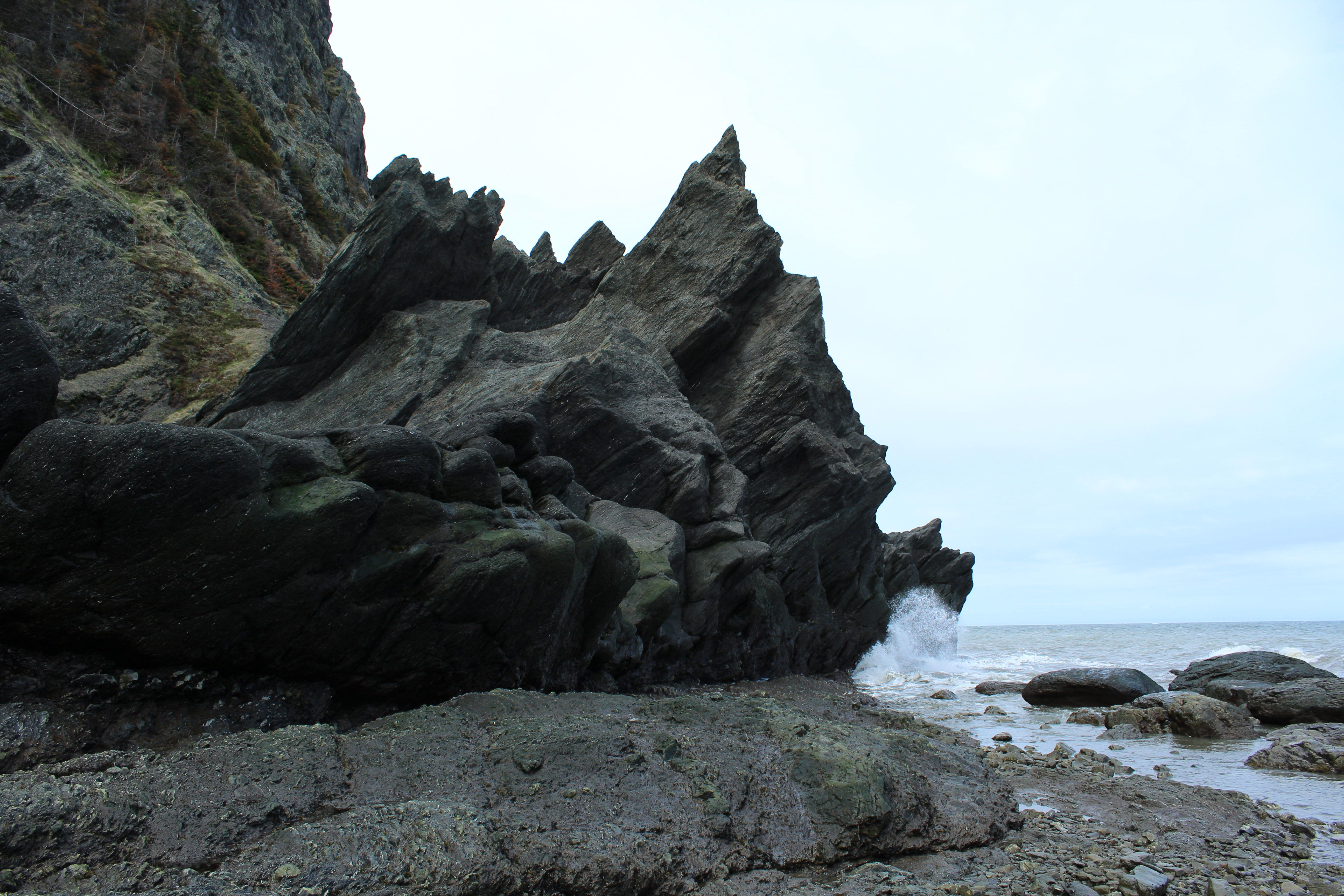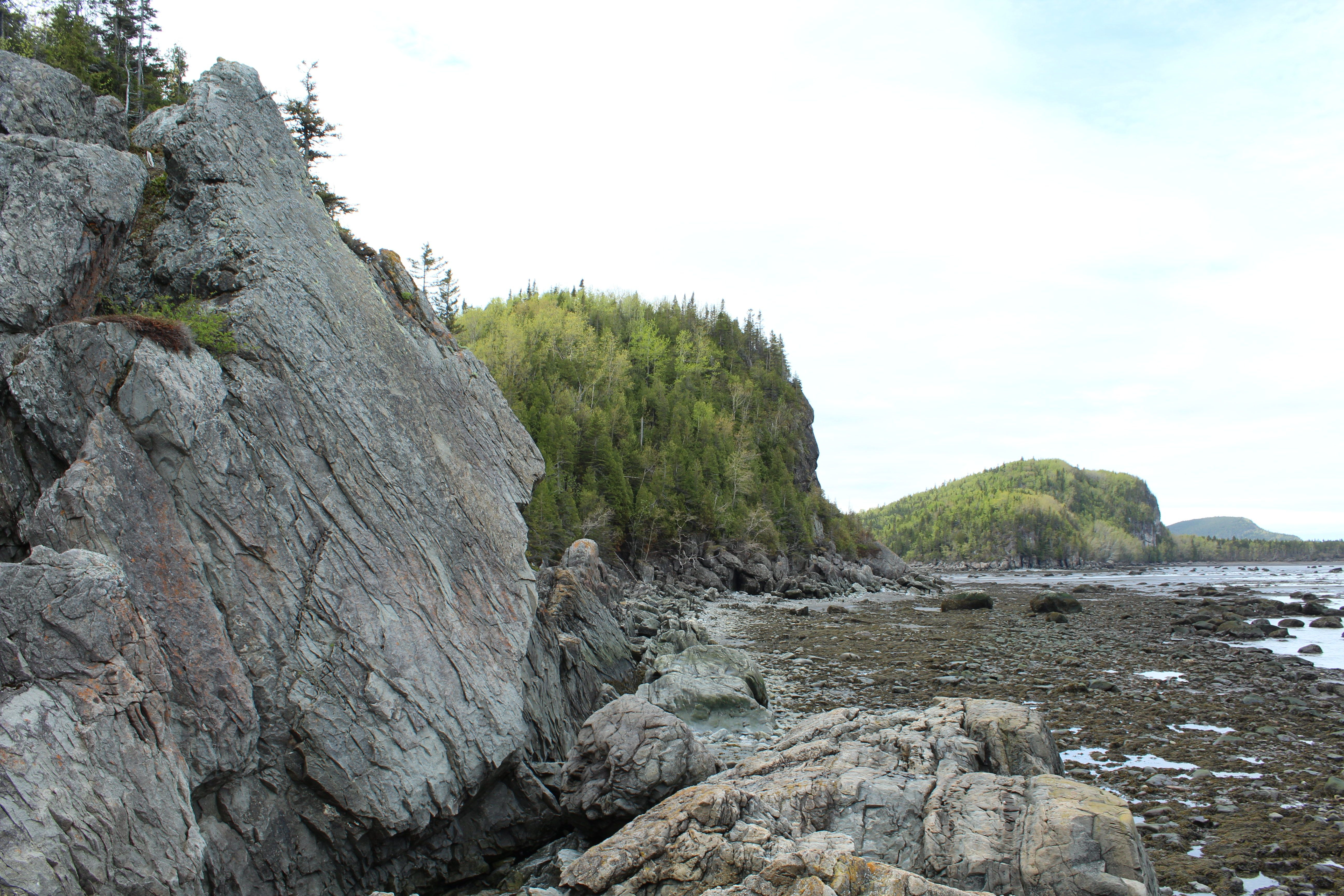Bic National Park on:
[Wikipedia]
[Google]
[Amazon]
Bic National Park is an national park of Quebec,



No French seigneur settled in the area during the period of
Bic National Park
{{Protected Areas of Quebec National parks of Quebec Protected areas of Bas-Saint-Laurent Protected areas established in 1984 1984 establishments in Quebec Canada geography articles needing translation from French Wikipedia
Canada
Canada is a country in North America. Its ten provinces and three territories extend from the Atlantic Ocean to the Pacific Ocean and northward into the Arctic Ocean, covering over , making it the world's second-largest country by to ...
, located on the south shore of the St. Lawrence River, near the villages of Le Bic and Saint-Fabien, southwest of Rimouski
Rimouski ( ) is a city in Quebec, Canada. Rimouski is located in the Bas-Saint-Laurent region, at the mouth of the Rimouski River. It has a population of 48,935 (as of 2021). Rimouski is the site of Université du Québec à Rimouski (UQAR), t ...
. It was founded on October 17, 1984, and is home to large populations of harbour seal
The harbor (or harbour) seal (''Phoca vitulina''), also known as the common seal, is a true seal found along temperate and Arctic marine coastlines of the Northern Hemisphere. The most widely distributed species of pinniped (walruses, eared se ...
s and grey seal
The grey seal (''Halichoerus grypus'') is found on both shores of the North Atlantic Ocean. In Latin Halichoerus grypus means "hook-nosed sea pig". It is a large seal of the family Phocidae, which are commonly referred to as "true seals" o ...
s. Its highest point is Pic Champlain at . Slightly less than half of the park is a coastal marine environment.
The park is owned by the Ministry of Sustainable Development, Environment and Parks of Quebec. It is managed by the Société des établissements de plein air du Québec (SÉPAQ).
Bic National Park is typical of the southern coast of the Gulf of St. Lawrence, containing several characteristics of this region:
* Low-flow rivers (la rivière du Sud-Ouest)
* Salt marshes (the marsh at Pointe-au-Spruce)
* Rocky hills with a very steep northern slope and a relatively gentle southern slope (Pic Champlain, Citadelle, Cap-l'Original, etc.)
History
Human occupation of Bic dates back almost 7,000 years: the park interpretive centre displays tools from that time.Battle at Baie de Bic



Jacques Cartier
Jacques Cartier ( , also , , ; br, Jakez Karter; 31 December 14911 September 1557) was a French- Breton maritime explorer for France. Jacques Cartier was the first European to describe and map the Gulf of Saint Lawrence and the shores of ...
tells of the Battle of the Bay of Bic in the spring of 1534 when 100 Iroquois warriors massacred a group of 200 Mi'kmaq
The Mi'kmaq (also ''Mi'gmaq'', ''Lnu'', ''Miꞌkmaw'' or ''Miꞌgmaw''; ; ) are a First Nations people of the Northeastern Woodlands, indigenous to the areas of Canada's Atlantic Provinces and the Gaspé Peninsula of Quebec as well as the no ...
on what he called Massacre Island in the St. Lawrence River. The Bay of Bic was an annual gathering place for Mi'kmaq along the St. Lawrence. Mi'kmaq scouting parties warned of an impending Iroquois
The Iroquois ( or ), officially the Haudenosaunee ( meaning "people of the longhouse"), are an Iroquoian Peoples, Iroquoian-speaking Confederation#Indigenous confederations in North America, confederacy of First Nations in Canada, First Natio ...
attack the night before the Iroquois arrival. The Mi'kmaq took away 30 of the sick and elderly, while about 200 Mi'kmaq left their encampment on the shore and retreated to the island in the bay. There they took cover in a cave, covering the entrance with branches. The Iroquois arrived in the morning. Finding the encampment deserted, they divided into search parties but failed to find the Mi'kmaq until the morning of the next day.
The Mi'kmaq warriors defended the tribe against the Iroquois assault. Initially, after many had been wounded on both sides, with the rising tide, the Mi'kmaq were able to repulse the assault and the Iroquois retreated to the mainland. The Mikmaq prepared a fortification on the island in preparation for the next assault at low tide. The Iroquois were again repulsed and retreated to the mainland with the rising tide. By the following morning, with low tide the Iroquois made their final approach. They had prepared burning arrows which burned down the fortification and wiped out the Mi'kmaq. Twenty Iroquois were killed and thirty wounded in the battle. The Iroquois divided into two companies to return to their canoes on the Bouabouscache River.Cartier, second voyage, CL, IXÎle du Massacre, Rimouski, QC : Battle between Mi'kmaq and Iroquois c. 1534No French seigneur settled in the area during the period of
New France
New France (french: Nouvelle-France) was the area colonized by France in North America, beginning with the exploration of the Gulf of Saint Lawrence by Jacques Cartier in 1534 and ending with the cession of New France to Great Britain and Spa ...
, but after the Battle of Quebec in 1759, an English lord named Campbell settled there.
In the decades that followed, a maritime pilot
A maritime pilot, marine pilot, harbor pilot, port pilot, ship pilot, or simply pilot, is a mariner who maneuvers ships through dangerous or congested waters, such as harbors or river mouths. Maritime pilots are regarded as skilled profession ...
post was established at Bic Island, opposite the park. It remained there until 1905 when it was relocated to Pointe-au-Père. The pilots had meanwhile settled on the banks of the St. Lawrence River, where they undertook subsistence farming.
At the end of the 19th century, several English villagers built cottages and country houses in the area of the park. Many of these homes are still standing today, although ownership has passed to the park. Among them are the Lyman Cottage, Feindel Cottage, and Wootton House which are on the shores of Anse à l'Original (on ''le Chemin du Nord'' trail).
From the late 1970s, preparations began to allow the formal establishment of the park, in 1984. Management of the park was transferred to Société des établissements de plein air du Québec (SÉPAQ) in 1999, by the same act which established Bic as a National park.
Hikes
Bicycle Trails
References
External links
Bic National Park
{{Protected Areas of Quebec National parks of Quebec Protected areas of Bas-Saint-Laurent Protected areas established in 1984 1984 establishments in Quebec Canada geography articles needing translation from French Wikipedia